Amma canteen: Where an Indian meal costs only seven cents
- Published

The amma canteens are run by women
The Tamil Nadu Chief Minister J Jayalalithaa's "amma canteens", which serve cheap meals to hundreds of thousands of people daily, have become immensely popular with the poor and the middle classes. The BBC's Geeta Pandey samples the treats at a canteen in Chennai (Madras).
It's just a few minutes after noon on a hot summer day as I join the queue of lunch-goers at the amma canteen in Pallavaram town, just outside the state capital, Chennai.
The menu today includes hot sambhar rice (rice cooked with lentils and spices) and curd rice (rice cooked in yogurt with curry leaves). The former is selling for five rupees (seven cents; five pence) a plate while the latter costs just three rupees - a fraction of what the dishes would cost in any other restaurant.
I'm famished so I buy a plate of each and move to one of the tables in the centre of the room to eat.

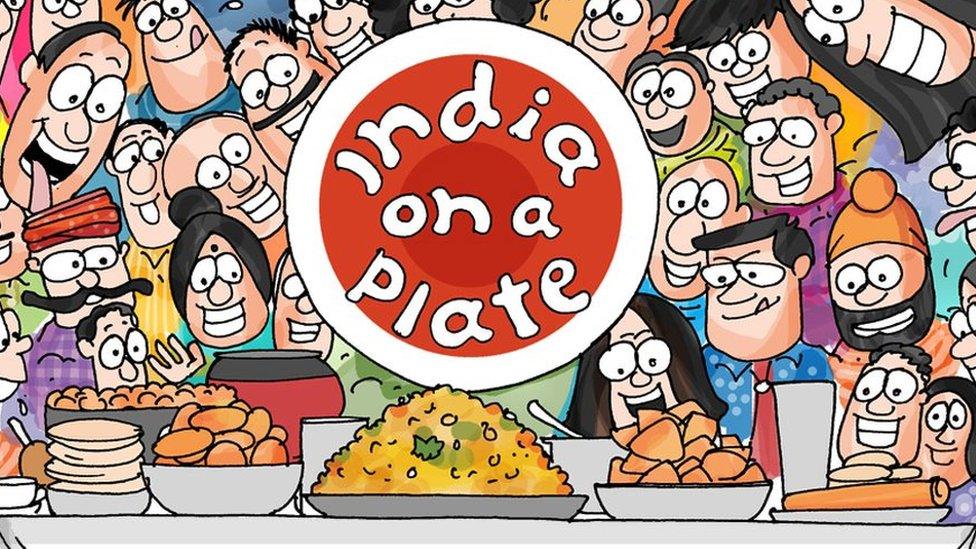
This is the seventh article in a BBC series India on a plate, on the diversity and vibrancy of Indian food. Other stories in the series:
The Indian street food bringing theatre to your plate
Inside India's 'dying' Irani cafes
What Indians have done to world cuisine

If you're after a fine dining experience, this place is not for you.
The heat and the humidity can be a bother and the sambhar rice is a bit too spicy for my north Indian palate.
But my fellow diners, men and women who include poor daily wage labourers, housemaids, college students, and middle-class office workers, are not complaining.
The portions are big and most describe the food as "delicious".
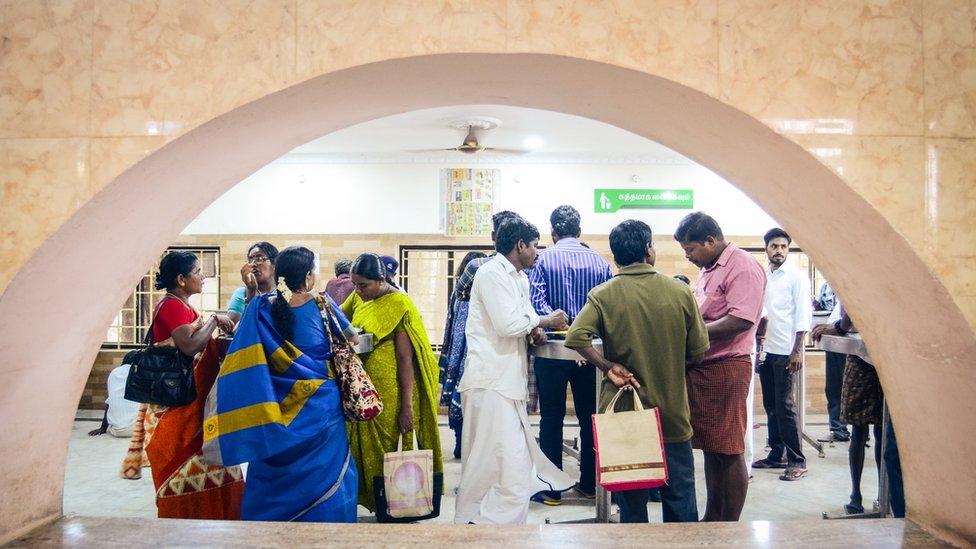
The amma canteens have become hugely popular with local people
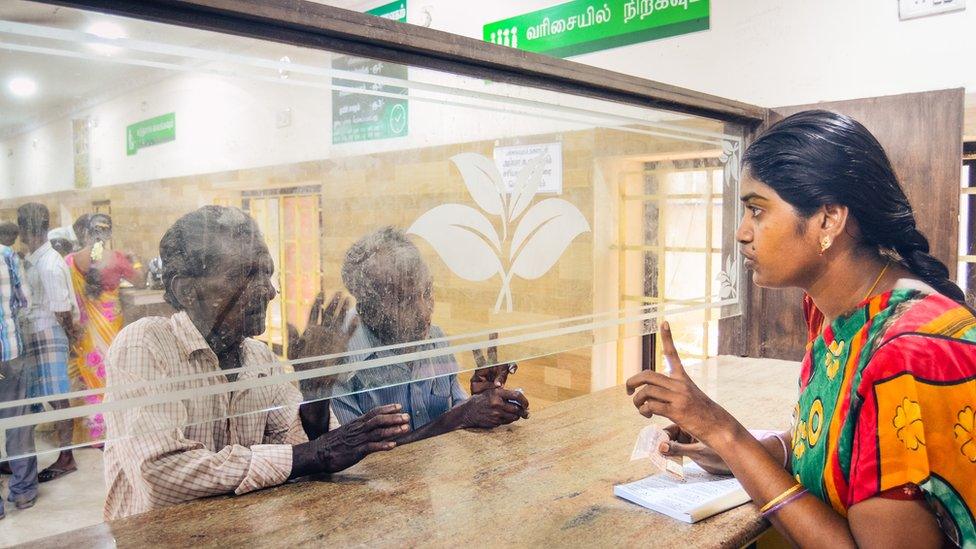
Diners buy coupons which are then exchanged for plates of rice
Lakshmi, who works in the neighbourhood as a housemaid, is a regular at this canteen.
"Earlier, my employers would give me leftovers, but now I come here for breakfast, lunch and dinner every day. For less than 20 rupees, I can eat three meals here," she tells me.
"This food is really good. I like all the dishes. My stomach's full and I'm happy," she says, patting her belly.

What's on the menu?
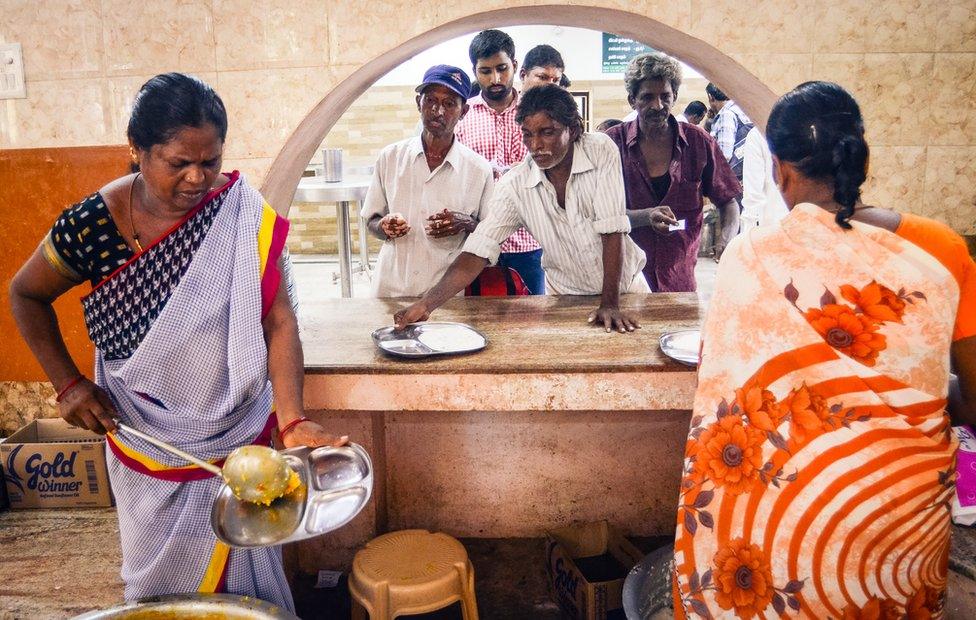
Breakfast (served from 7am to 10am) - idli (steamed rice cakes) for one rupee or pongal rice (rice cooked with lentils and peppercorn) for five rupees
Lunch (served from 12 noon to 3pm) - sambhar rice (rice cooked with lentils and spices) or lemon rice or curry leaf rice for five rupees each and curd rice (rice cooked in yogurt with curry leaves) for three rupees
Dinner (served from 5pm to 7:30pm) - two rotis with daal (handmade bread with lentil soup) for three rupees

Raju, a construction worker from Punjab, was introduced to the canteen by his co-workers.
"I earn 400 rupees a day. Before these canteens came up, I used to spend at least 150 rupees on food per day. Now I spend only 20 rupees a day," he says.
The canteens were first started in 2013 in Chennai by Ms Jayalalithaa, who is popularly called amma (mother) - hence the name amma canteen - with the aim to provide subsidised meals to the public.
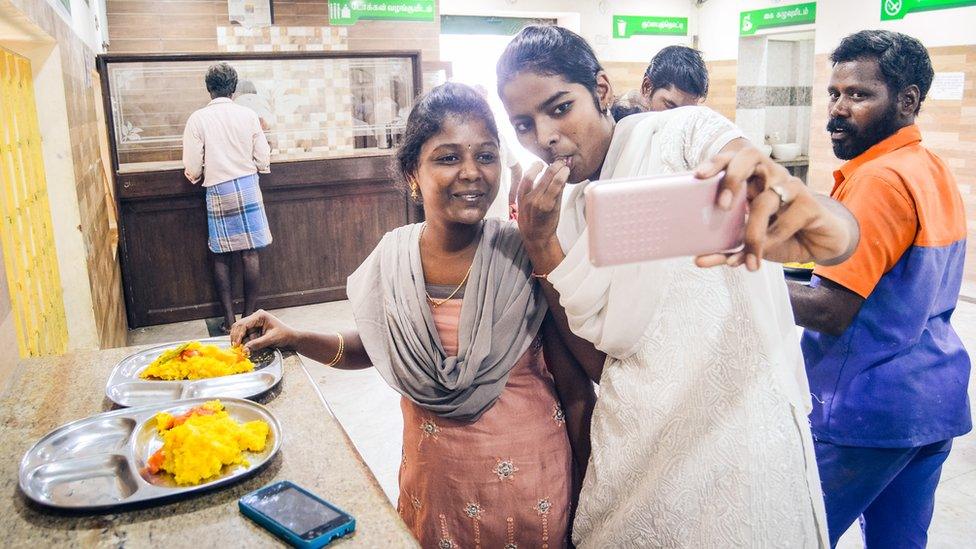
These two first-time visitors in were taking a selfie to upload on Facebook
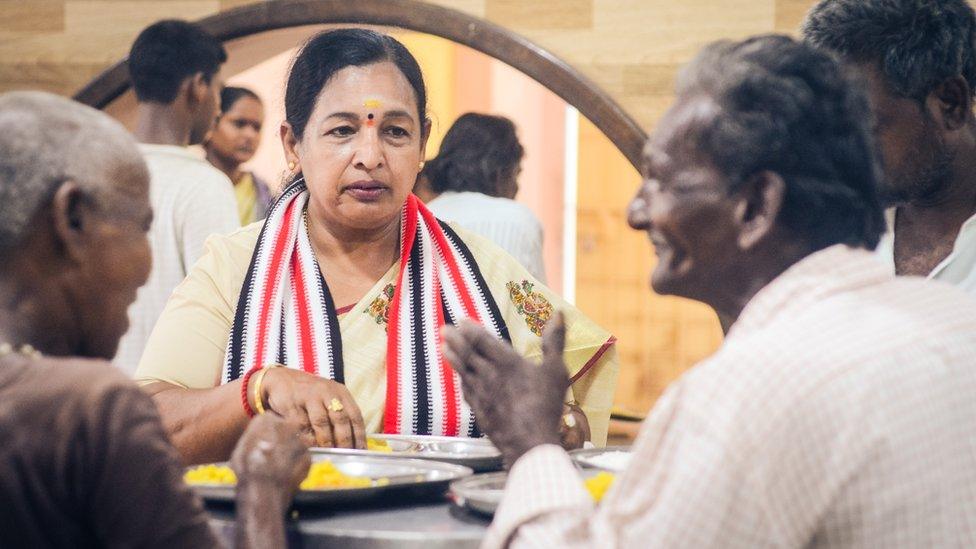
AIADMK party spokesperson CR Saraswathi says Ms Jayalalithaa started the canteens to provide good, cheap food to the people
Today, there are more than 300 such eateries in the state - at least half of them in Chennai alone. They serve simple breakfast, lunch and dinner every day of the week.
"The food is prepared hygienically, it's very well made and it's tasty," says CR Saraswathi, spokeswoman for Ms Jayalalithaa's All India Anna Dravida Munnetra Kazhagam (AIADMK) party.
"Our chief minister started these canteens to provide good, cheap food to the people. It has also generated employment for thousands of women. The canteens are run by women who cook, clean and serve."
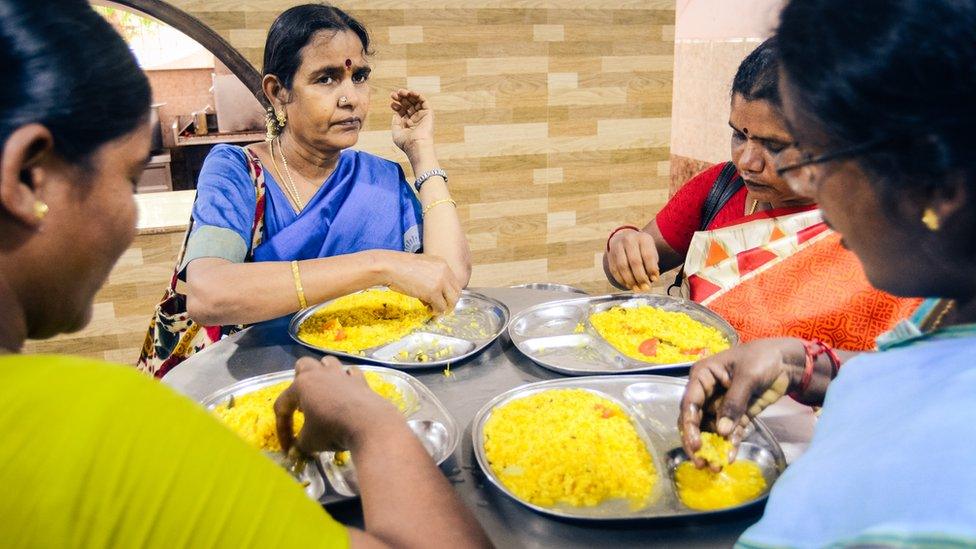
Most diners describe the food as "delicious"
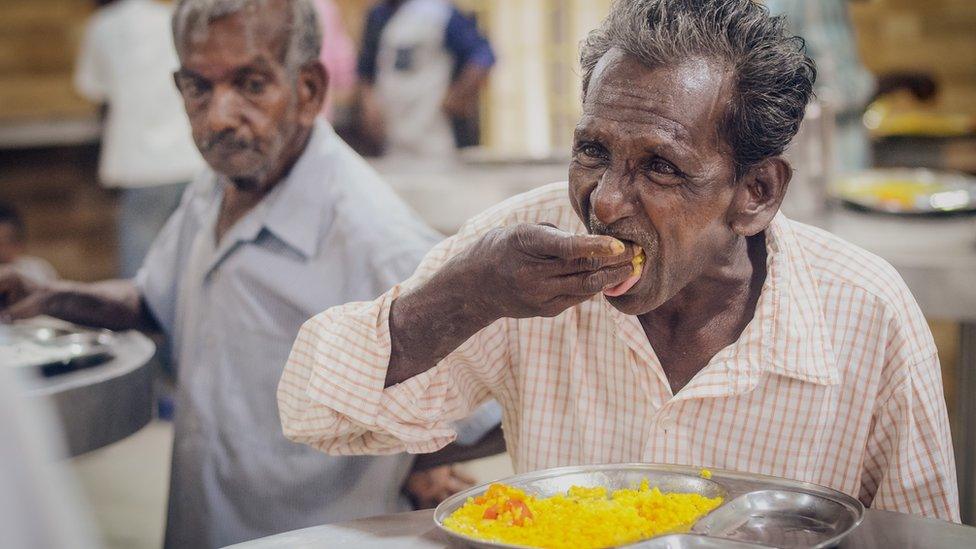
And the scheme has served Ms Jayalalithaa well too.
The canteens have helped poor and lower middle-class families massively slash their food bills and freed the womenfolk from the daily drudgery of cooking and cleaning. And their gratitude has often translated into votes for Amma.
A year after the scheme was launched, Ms Jayalalithaa's party won 37 of the 39 seats in the 2014 parliamentary elections.
In April, her party was re-elected in the state assembly polls and analysts say the canteens are among the reasons for her victory.
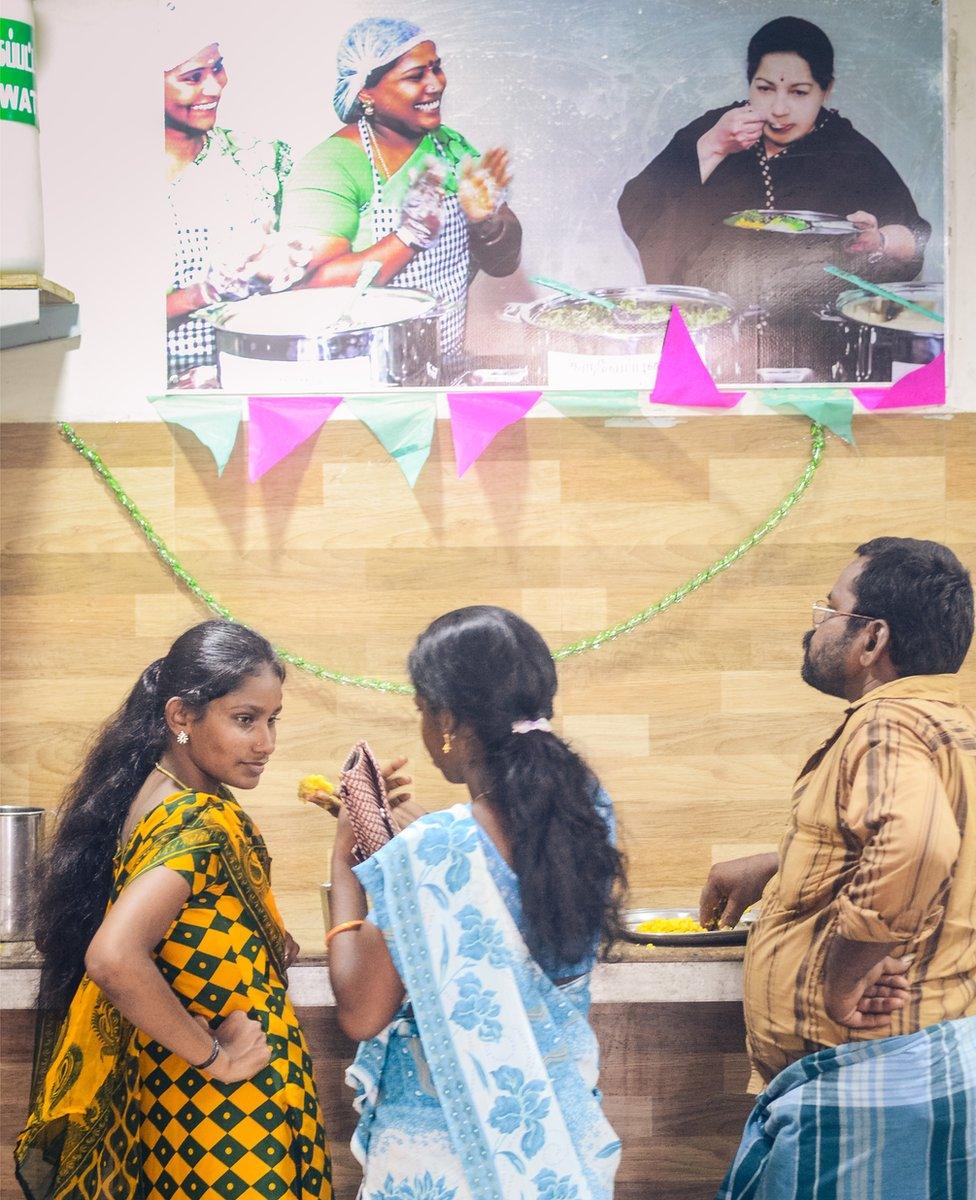
Analysts say the canteens are among the reasons behind Ms Jayalalithaa's election victory
At the canteen, I come across S Shweta and S Pavitra - two young women who work as salesgirls in a telephone showroom nearby.
This is their first visit to an amma canteen and to mark the occasion, they are taking a selfie with their plates of rice.
The photograph, they tell me, will be uploaded on their Facebook accounts.
"This is a great initiative. Where else can poor people eat a full meal for five rupees? We support amma," says Ms Shweta.
As the popular saying goes, the way to a man's - and presumably also a woman's - heart is through the stomach. And Ms Jayalalithaa knows it well.